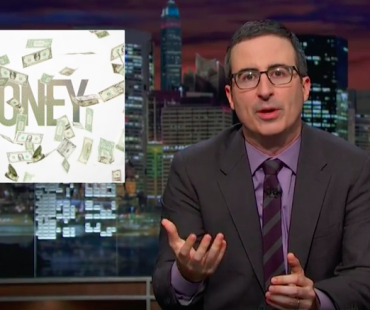You might be dealing with an online scammer if they request sensitive personal information, money, or insist on speaking on a chat app of their choice. Award-winning identity theft protection with AI-powered digital security tools, 24/7 White Glove support, and more. Romance scammers will never be able to meet up in person, and will always have excuses that prevent them from meeting over video. They’ll also try to quickly make relationships more intimate by saying they love you or sending onion-based software architecture software development sensitive photos (which are often stolen from other accounts). But in order to complete the sale, you’ll be asked for personal information including your home address and credit card information. Be cautious of any account that reaches out to you and offers support.
Always verify the identity of anyone reaching out to you on Telegram, especially if they request personal information or money. Take the time to check for verified accounts, which are marked with a blue checkmark. If in doubt, reach out to the company directly through their official channels or websites to confirm their legitimacy. In a “pump and dump” scam, the owners of a Telegram channel try to coordinate price manipulation of a cryptocurrency with a large group of members. The admins may claim to have “special” or insider knowledge; but in reality, they’re trying to pump the value of an asset they own and then sell it off before it crashes. In this scam, criminals create fake listings on classified sites for products like cameras, laptops, and iOS devices.
Never click on links
- Also, beware of anyone charging for “premium” support or pushing you to pay for an account “upgrade.” These are telltale signs of a scam.
- Always use strong, unique passwords and two-factor authentication to keep your account secure.
- Another thing that Cash App scammers will often ask for is gift cards.
- Avoid clicking on any links or showing interest in their giveaways.
- This makes it significantly more difficult for scammers to gain access to your account, even if they manage to obtain your password.
This scam goes all the way back to the classing Nigerian 419 scams that involve alleged princes and government officials trying to recover their fortunes. Data brokers collect and sell your personal information, exposing you to unnecessary risks like phishing, scams, and identity theft. If you sent Bitcoin or another crypto token as payment, then your chances of recovering those funds are slim to none, unfortunately. You should definitely change your wallet passwords if you feel they may have been compromised. Immediately transfer your amazon web services what is the difference between scalability and elasticity tokens to a fresh wallet if your seed phrase or private keys were compromised. Some Telegram scammers are after your money, but most will target your personal information.
Telegram Messenger App Scams - How To Not Get Scammed
They might claim to need the money to make bail, pay medical expenses, hire a tow-truck, or any number of other purposes—whatever they think will work on you. The telltale sign that someone might not be who they claim is that they respond privately to a question you asked publicly. If they did respond publicly, they’d likely be shouted down by multiple members of the group, if not outed by the real admin. An admin profile can’t be cloned exactly—the fact that Telegram usernames are unique make this impossible—but a determined scammer can make a very convincing lookalike profile. Read on to learn why these scams are worth knowing about, how some of the most common scams work, and what you should do when you come across them. We’ve got you covered with tips and resources for damage control and recovery.
Finally, If you encounter a suspicious job offer or a potential scam, report it to Telegram and other relevant authorities. One of Telegram’s central features revolves around allowing users to create bots. Unfortunately, scammers exploit these bots and run their schemes using malicious bots. These bots are designed to convince victims to hand over their personal information through a variety of scams.
Were You the Victim of a Telegram Scam? Here’s What To Do
The “Super Cash App Friday,” “Cash App Fridays,” and “Fortune4Days” promotions are or have at different times been real promotions. This is one of those Cash App scams that seems harmless at first glance but then turns out to be particularly scary when you dig deeper. The scam begins with you receiving a Cash App debit card in the mail. The card arrives at your home address and is in your name, but not at your request. In either case, pyramid schemes are illegal in the US, UK, and many other parts of the world. The FTC uses such reports to bring cases against those responsible.
Also, avoid unrealistic returns by retaining skepticism of investments promising guaranteed or unusually high returns. Contact your bank, credit union, or credit card company and explain what happened if you sent a scammer any funds or gave them your credit or debit account details or banking login credentials. They’ll advise you on what to do next and can issue new cards or freeze your account. Ponzi schemes are a sophisticated type of investment scam that Telegram users should be wary of. Fraudsters create fake investment schemes that claim to deliver huge profits. However, the scammers simply use money from newer investors to pay older investors.
Telegram fake job listings and offers scams
Look for the red flags of online sales scams — including suspiciously low prices, sellers who refuse to meet in person, or sellers asking you to talk to them over Telegram. Once you give the forex commodities indices cryptos etfs scammers what they want, they disappear and your prize never materializes. Free prizes, sweepstakes, and giveaways are some of the oldest frauds around.
These scams often exploit the jobseeker’s desperation for employment and can occur through various channels and messaging platforms. This is a type of online fraud where scammers use Telegram bots to deceive users into revealing sensitive information, such as passwords, private keys, or personal details. These bots are programmed to imitate legitimate services or entities, tricking users into providing information that can be exploited for financial gain or identity theft. Similar to tech support scams, impersonation scams occur when a scammer – such as one on Telegram – pretends to be someone they’re not, like a company or public figure. They do this to trick you into sharing personal information with them. For example, you may be on a channel and receive a message from a fake Telegram admin about a giveaway or prize.





